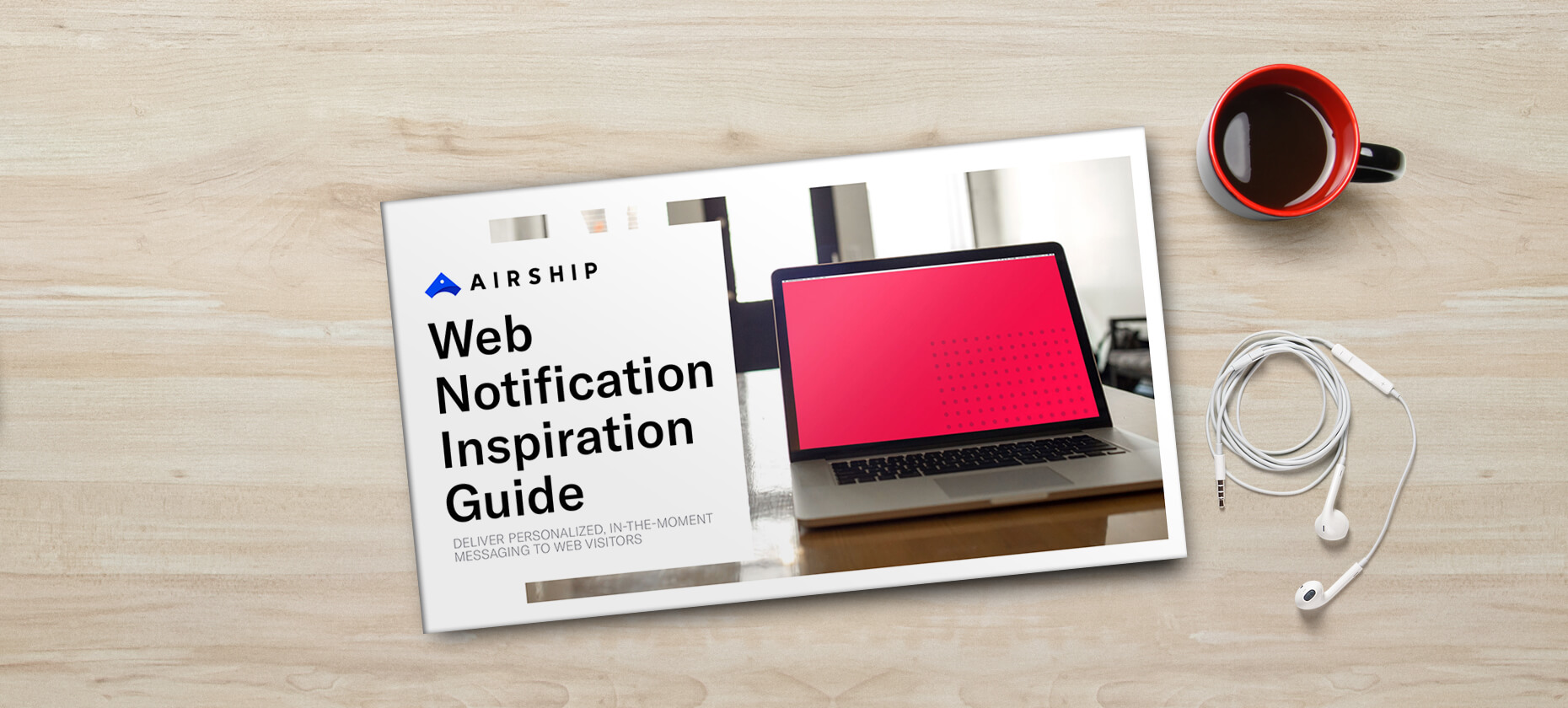
11 Reasons To Start Using Web Notifications Today
Web push notifications, browser push notifications, Chrome push notifications, web push: whatever you call them, web notifications — notification-style messages sent through a web browser — are turning websites into even more powerful tools for marketers.
If you’ve sent push notifications from an app, you’re probably already aware of the unique opportunity they hold for building real-time, in-the-moment connections with your prospects and customers. If you haven’t used push notifications in your marketing mix before, get excited.
Below are the top 11 compelling reasons (among many!) to start using web notifications today. You can literally be up and running in minutes — for free.
Don’t miss out on early adopter advantage — the sooner you start experimenting with web push to see what works for you, the more value you’ll be able to drive for your brand and your customers. Here are just a handful of the many reasons to give web notifications a go:
1) Reach web visitors — whether they’re on your web site or not.
The number one reason to love web notifications: unlike any other website communications tool, web push notifications can reach your audiences even when they’re not actively using your website — and bring them back to your site.
If someone is online and they’ve opted in to receive browser push notifications from you, you can reach them. That is a huge advantage no other web communications channel can offer.
2) Hook casual web and mobile web visitors faster.
Grab the attention of more casual, “top of the funnel” browsers with a web notification — they won’t have to go all in and give you their email address; they can enable push and see what you have to offer in one quick click. Keep the momentum by requesting permission to keep them up to date with more of what they came for: the latest news, products, releases, etc.
You can be up and running with web notifications quickly and easily. Get started for free today with Web Notify.
3) Creating a web notification is (way) quicker than creating an email.
Like app push notifications, web push notifications are short and sweet, and quick and easy to send. Good emails require time — crafting high quality subject lines, writing engaging copy and creating strong images — not to mention finding a slot on your company’s closely-guarded email calendar. With web notifications, you can get information in front of your web visitors fast.
4) No email address required.
You don’t need to collect an email address to communicate with your audience with browser notifications. That’s a massive opportunity to create an ongoing communication channel with anonymous visitors who might never opt-in with email.
5) Web notifications help you protect your website investments — and your customer acquisition spend.
Chances are, if you have invested in a website, you are focused on acquiring customers on the web. Whether visitors are coming to your site from search or other paid channels, web notifications give you another chance to establish an ongoing connection with a customer or potential customer — another chance to protect your customer acquisition spend.
6) Encourage (and accelerate) conversion actions — like first time purchases.
Web notifications can deliver offers, values and incentives at lightning speed. They’re a tool to help you deliver targeted, personalized messages to opted-in browsers, bringing the value of permission-based, notification-style messaging to websites.
7) Can be easily managed by marketing and other non-tech teams.
Once web notifications are up and running on your site, a marketing team can align campaign messaging across all their channels. In many cases, simply adding web push notifications to a web marketing strategy can increase online conversions because it can deliver real-time relevant messaging. Whether it’s a reminder about items left in an abandoned cart, or an update about a transaction completed, data tells us that digital consumers appreciate personalized communication that speaks to their needs, in their moment of need.
8) No fake contact info to deal with.
Because the opt-in process for browser notifications leverages the browser itself as the channel for messages, users won’t be providing fake information when they opt in. Data integrity for web notifications is extremely high.
9) Notifications are hard for users to miss.
Much of the day for most people is spent on a laptop or on a phone using the mobile web. Push notifications — whether they’re coming from a mobile app or a website — get priority access to users’ attention. That’s especially true when they’re really good: a relevant bite-sized piece of information someone can act on quickly and easily.
10) Big impact, low effort.
It takes very little time and effort to get web notifications up and running on your site. And, because they’re a new channel, your visitors are even more likely to pause, take notice, and take action. (Why not try it out now!)
11) Companies without apps can now tap into to the power of push notifications.
If you’ve never used push notifications in your marketing mix because you don’t have a mobile app, web notifications give you a way to send push notifications without an app, leveraging the power of notification-style messaging and seeing how it works for you and your customers.
Download our Web Notifications Inspiration Guide today to:
– See use cases you can adopt and implement
– Build smarter, more engaging campaigns
– Spark your thinking about web notification possibilities
Subscribe for updates
If the form doesn't render correctly, kindly disable the ad blocker on your browser and refresh the page.
Related Posts


How to Create Web Push Notifications


